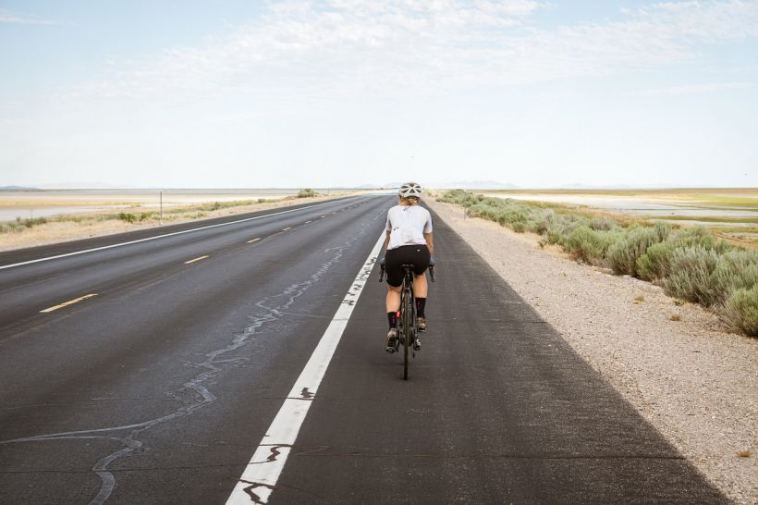- Like
- SHARE
- Digg
- Del
- Tumblr
- VKontakte
- Flattr
- Buffer
- Love This
- Save
- Odnoklassniki
- Meneame
- Blogger
- Amazon
- Yahoo Mail
- Gmail
- AOL
- Newsvine
- HackerNews
- Evernote
- MySpace
- Mail.ru
- Viadeo
- Line
- Comments
- Yummly
- SMS
- Viber
- Telegram
- JOIN
- Skype
- Facebook Messenger
- Kakao
- LiveJournal
- Yammer
- Edgar
- Fintel
- Mix
- Instapaper
- Copy Link
Introduction
Cycling is a recreational activity and an effective form of exercise that can be done almost anywhere in the world. Once a cyclist has conquered their local area, they tend to move on to cycle national routes in their country, after which the next natural step is to look further afield and plan a cycling trip abroad.
This of course takes a lot more research, planning, and preparation. The trip that you plan will be largely influenced by your budget, but once you have calculated that, this guide to planning a cycling trip will outline the most important decisions you need to make.
Choosing Your Destination
You may already have a destination in mind for your cycling trip. For example, if you have a long-held ambition to cycle La Ruta de Los Conquistadores in Costa Rica, The Friendship Highway in China, or another of the world’s famous cycling routes, this is the ideal time to finally tackle these.
However, if you are hoping to be able to cycle through a country on public roads, rather than completing a dedicated cycling trail, you should consider whether the country welcomes/accommodates cyclists. Some countries or areas within countries are not suitable (and often not safe) for cyclists. You want to choose a destination that welcomes recreational cycling and has thought about cyclists when designing their roadways.
Europe is a great choice as, according to research by Myprotein, who analysed more than 150 countries to find out which were the sportiest nations (both in terms of sporting achievement and recreational activity), found that “Europeans prefer outdoor sporting activities like cycling and swimming”. In fact, the North Sea Cycle Route (also known as the Euro Velo Route 12) covers 3,728 miles from Scotland’s Shetland Islands along the coasts of Britain, France, Belgium, the Netherlands, Germany, Denmark, Sweden, and Norway.
Taking the Road Less Traveled
When choosing a particular cycling route, you should consider whether you want to experience one of the most famous (and therefore busiest) cycling routes, or if you would prefer a road less travelled. There are some stunning routes such as the mountains of France, Spain, and Italy, but as soon as the snows melt each year, thousands of cyclists, RVs, and tourists arrive, resulting in busy roads and fully booked hotels.
If you are looking for a more peaceful and unique experience, consider planning your own route in a less well-known destination. There are plenty of beautiful landscapes in the world, and although it takes a bit more research and planning, you can plan your own trip to avoid the crowds.
Package Deals or DIY?
If you do not have the time or inclination to plan a trip, you might want to consider booking a package deal with a company that will take responsibility for all the elements of the trip, including flights, hotels, food, planning the route, additional VIP experiences, and more. Some companies even offer massage services, meals planned with sports nutrition in mind, support vehicles with energy-boosting snacks, water, extra clothes, first aid equipment, and bike pumps.
However, if you are not one for being told what to do and when to do it and would like to keep costs down, the DIY approach is more suitable. Whatever option you choose, you need to ensure that you have prepared a suitable kit, e.g., you have the right clothing (including layers), but also that you are physically prepared for the altitude or climate.
Comfort or Adventure?
Your next consideration is what type of trip you want to have. For example, you may want to plan a touring trip, which is sometimes called ‘bikepacking’. You pack yourself a basic overnight kit with a sleeping bag and small tent, head out on the road for days at a time, and set up camp where you can. This will enable you to cover a lot of miles and possibly complete a specific route, e.g., you could cross or circumnavigate an entire country or travel between major cities.
Another option, if you prefer a more comfortable experience, is to choose a specific region and book yourself into one or several hotels in that area. You would then have a base to return to each night where you can shower and get a good meal and a good night’s sleep. Your decision will come down to what is more important for you: comfort, relaxation, and exploring a region, or adventure, freedom, and covering a lot of miles?
Get Cycling Travel Insurance?
It is never wise to travel without insurance, but if you will be spending much of your trip cycling in an unfamiliar country, it is imperative that you have adequate cover. We all hope that we will have an uneventful trip, and no one will be injured or become unwell, but even the safest of cyclists cannot anticipate all eventualities. This is particularly true if you are travelling to a particularly hot climate or snowy mountains. It does not take long to find and compare travel insurance, and it will give you peace of mind that you are covered financially should you need medical attention.
Solo or Group Trip?
If you are someone who enjoys cycling alone, the planning process will be relatively simple as you only have your own needs and preferences to consider. However, many people find that they get more enjoyment from being able to share their experience with other people. You may have a group of friends or a local cycling club who you regularly cycle with or you might want to make it a family vacation. If you are booking a package deal, you will be cycling with people you do not know, but you will all share a passion for cycling, and you make even make new friends.
Rent or Take Your Own Bike?
A big dilemma for many travelling cyclists is whether to take your own bike or to rent a bike when you arrive. By taking your own, you will be avoiding the expense of renting and will enjoy the familiarity of your own equipment, but you will need to pay extra to take your bike on a plane. You will also need to consider there is a risk that the bike could be damaged during the journey, and you will need to dismantle and reassemble it before and after both legs of the journey. Renting a bike might be a better solution for some people, as these bikes are usually well-maintained, and your bike, while familiar, might not be cut out for the new terrain.


